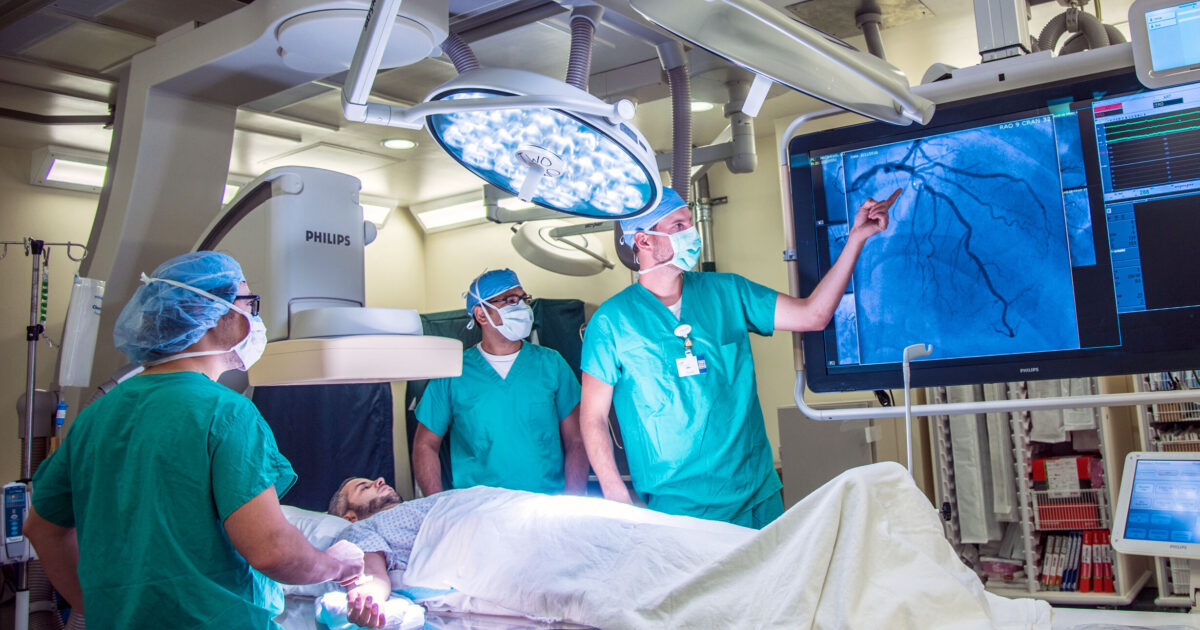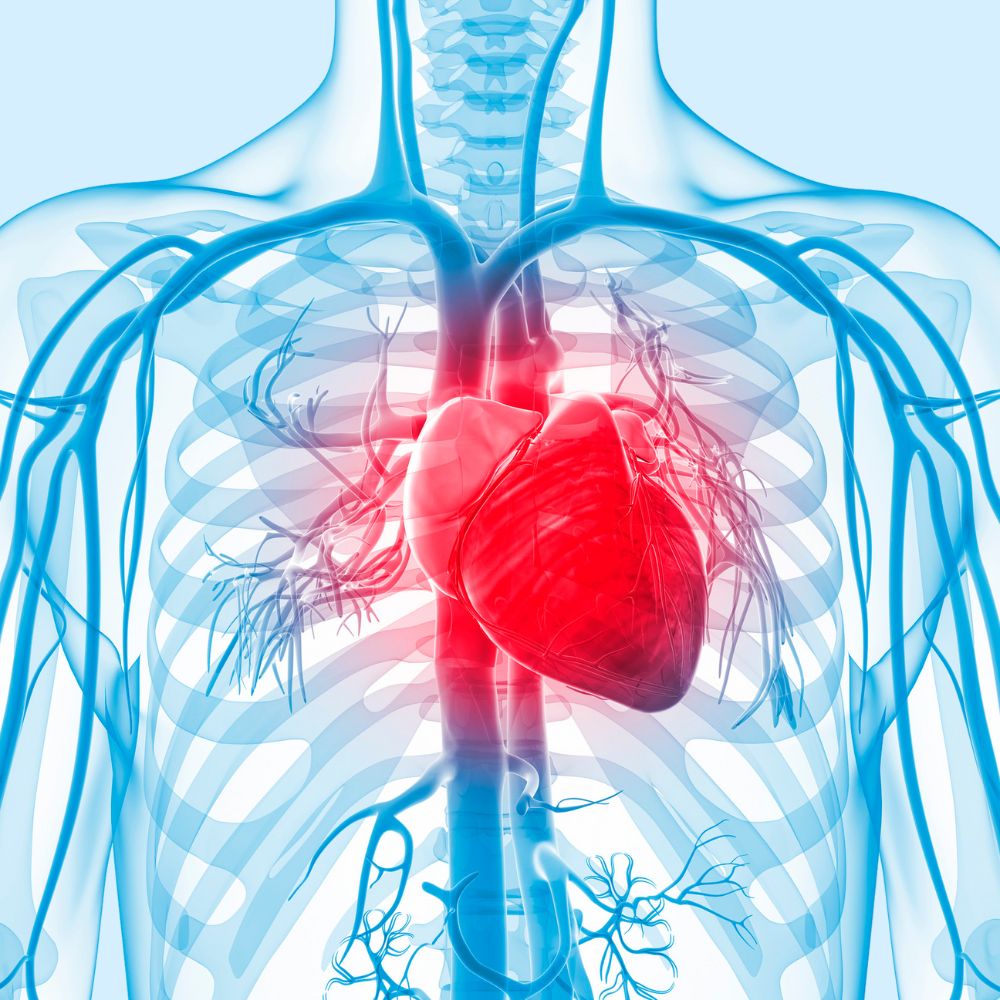What Cardiology Jupiter patients often misunderstand (and the truth)
What Cardiology Jupiter patients often misunderstand (and the truth)
Blog Article
Understanding the Significance of Cardiology in Modern Healthcare Services
Cardiology plays a vital duty in modern medical care, especially as heart illness remains to be the leading reason of mortality worldwide. Developments in diagnostics and therapy have actually transformed person treatment, making it possible for earlier treatments and improved results. Furthermore, the shift in the direction of precautionary cardiology equips individuals to handle their wellness proactively. As technology remains to evolve, the assimilation of ingenious options may additionally redefine cardiology's effect on public wellness, motivating a more detailed examination of emerging trends and their effects.
The Occurrence of Cardiovascular Disease and Its Impact on Public Wellness
Heart condition remains the leading cause of fatality globally, its effect extends far beyond private people to influence public wellness systems and economies. The high prevalence of heart disease puts a substantial pressure on healthcare resources, requiring increased financing for treatment, rehab, and prevention programs. Public health initiatives should attend to danger variables such as weight problems, smoking, and less active way of lives, which add significantly to the rising occurrence of heart conditions.Moreover, the economic concern linked with heart condition is tremendous, encompassing not just direct medical expenses yet additionally indirect costs associated with shed productivity and premature mortality. Communities deal with difficulties in managing these prices, usually resulting in differences in healthcare access and end results. As the population ages and lifestyle-related threats remain to intensify, the seriousness for effective cardiology treatments ends up being vital. Dealing with heart disease is not just an issue of individual health and wellness but also a crucial public wellness concern.
Advancements in Cardiac Diagnostics and Imaging Techniques
Current advancements in cardiac diagnostics and imaging methods have actually reinvented the field of cardiology, improving the capacity to keep track of and discover cardiovascular disease. Methods such as heart MRI, CT angiography, and echocardiography have come to be increasingly advanced, offering thorough photos of heart frameworks and functions. These techniques allow for the very early recognition of conditions like coronary artery illness, heart failing, and valvular disorders.Moreover, developments in non-invasive diagnostics, such as wearable modern technology and remote surveillance gadgets, have actually empowered individuals and healthcare companies. These devices help with real-time tracking of heart rhythms and other vital indications, leading to prompt treatments. In addition, expert system is being incorporated into imaging analysis, improving precision and effectiveness in diagnosis.
Advancements in Therapy Choices for Heart Issues
Current innovations in cardiology have actually brought about significant technologies in treatment options for heart disease. These include innovative medical methods that enhance step-by-step results and emerging medications that supply brand-new methods for treatment. As the field progresses, these innovations play an important function in enhancing individual treatment and outcomes.
Advanced Surgical Techniques
Developments in medical strategies have actually changed the landscape of cardiology, providing brand-new hope for clients with heart disease. Minimally intrusive procedures, such as catheter-based interventions, have actually substantially lowered recuperation times and medical facility stays. Techniques like robotic-assisted surgical treatment boost accuracy, permitting surgeons to navigate complex anatomical frameworks with greater accuracy. Developments in imaging modern technology facilitate real-time visualization during procedures, improving results. Transcatheter aortic valve replacement (TAVR) exemplifies an innovation in dealing with aortic stenosis, allowing shutoff replacement without open-heart surgical procedure. Furthermore, hybrid techniques that incorporate catheter-based and medical approaches give tailored options for various cardiac concerns. These innovative medical strategies not just enhance client security however likewise expand therapy alternatives, highlighting the crucial role of development in modern cardiology methods.
Emerging Treatments and medications
As the landscape of cardiology remains to develop, emerging treatments and medications play a crucial function in improving therapy choices for heart disease. Advancements such as unique anticoagulants and progressed lipid-lowering representatives have transformed the administration of heart diseases, significantly reducing person morbidity and death. Furthermore, the growth of genetics therapies and regenerative medicine uses promising methods for dealing with problems formerly regarded incurable. Scientific trials are continually exposing the effectiveness of these treatments, pressing the borders of typical treatments. The assimilation of digital health and wellness innovations assists in personalized medication, permitting for tailored treatment plans based on genetic and way of life aspects. Jointly, these innovations highlight the vibrant nature of cardiology, enhancing patient end results and redefining criteria of treatment in contemporary health care.
The Role of Preventive Cardiology in Client Treatment
Preventive cardiology plays a crucial duty in person care by concentrating on the recognition of risk elements that contribute to heart problem. Via lifestyle adjustment approaches and very early discovery strategies, doctor can properly lower the occurrence of cardiovascular events - Cardiology. This positive approach not just enhances individual outcomes yet additionally advertises lasting health
Threat Element Identification
While heart diseases continue to be a leading source of morbidity and mortality worldwide, effective danger aspect recognition acts as a keystone of preventive cardiology. Identifying risk variables such as hypertension, family members, hyperlipidemia, and diabetes background is important for early intervention. Health care professionals make use of various screening techniques to examine these variables, enabling tailored precautionary actions. Furthermore, comprehending a patient's way of life selections, such as cigarette smoking and physical lack of exercise, additionally educates threat analyses. This complete examination allows medical professionals to create individualized treatment plans intended at mitigating threats. By prioritizing risk factor recognition, health care systems can enhance individual results and minimize the total concern of heart diseases, inevitably adding to improved public health and wellness approaches and source allowance.
Lifestyle Modification Approaches
A wide range of researches highlights the critical duty of way of living adjustment approaches in minimizing cardio illness risk. These methods include dietary changes, raised exercise, smoking cigarettes cessation, and weight management. By taking on a heart-healthy diet plan abundant in fruits, veggies, entire grains, and lean proteins, people can reduce cholesterol degrees and blood stress. Regular exercise enhances the heart and boosts general cardio wellness. Additionally, quitting smoking cigarettes significantly decreases the danger of cardiovascular disease and enhances recuperation rates for those with present conditions. Weight administration additionally adds to cardiovascular health by reducing various other risk elements such as diabetes mellitus and high blood pressure. Executing these lifestyle changes not only advertises specific well-being however also functions as a keystone of preventative cardiology in patient care.
Early Detection Techniques
Way of living modifications significantly add to reducing cardio disease dangers, but they are most efficient when coupled with very early detection strategies. Precautionary cardiology stresses the relevance of recognizing potential heart concerns prior to they intensify into severe conditions. Methods such as blood stress monitoring, cholesterol screening, and advanced imaging technologies like echocardiograms play important duties in assessing cardiovascular wellness. Biomarkers and genetic screening also enhance the precision of early discovery, permitting customized precautionary techniques. Regular heart danger evaluations equip medical care companies to step in proactively, possibly preventing cardiac arrest and strokes (Cardiologist near me). By incorporating these very early detection methods into regular care, individuals can take advantage of timely lifestyle interventions and targeted therapies, eventually improving outcomes and improving lifestyle
Integrating Innovation Into Cardiology Practices
As improvements in innovation continue to improve different fields, the integration of cutting-edge devices and systems right into cardiology practices has become necessary for enhancing person care and end results. Telemedicine platforms allow cardiologists to check clients remotely, boosting access to care while reducing go right here the concern on health care centers. Wearable gadgets, such as smartwatches, enable continuous heart rate surveillance, informing both physicians and patients to potential concerns in real-time. In addition, expert system (AI) is being used to evaluate substantial quantities of heart information, helping in very early diagnosis and tailored treatment strategies. Advanced imaging techniques, including 3D echocardiography, enhance visualization of heart structures, bring about much more precise interventions. Digital health and wellness documents (EHRs) improve patient info monitoring, guaranteeing that cardiologists have immediate access to essential information. With each other, these technical improvements are changing cardiology, advertising aggressive administration and improved wellness results for patients with cardiovascular conditions.
The Value of Person Education and Engagement
Individual education and interaction play a critical duty in the monitoring of cardiovascular health and wellness. By equipping individuals with knowledge concerning their problems, therapy alternatives, and way look at here now of life modifications, healthcare suppliers equip individuals to take an active function in their treatment. This aggressive technique can cause enhanced adherence to suggested medications, nutritional changes, and workout programs, inevitably minimizing the risk of complications.Engagement additionally promotes a strong patient-provider connection, encouraging open interaction and trust fund. When patients really feel notified and included, they are more probable to voice problems and ask inquiries, which can bring about far better professional outcomes. Additionally, educational resources, such as workshops or digital platforms, can boost understanding and advertise self-management techniques. In general, focusing on person education and learning and interaction is vital for improving cardio wellness, enhancing quality of life, and reducing health care costs connected with heart diseases.
Future Trends in Cardiology and Their Prospective Effect

Often Asked Questions
What Way Of Life Adjustments Can Minimize Heart Problem Risk?
The present question addresses way of living adjustments that can significantly lower heart problem threat. Cardiology. Embracing a balanced diet plan, involving in regular physical activity, preserving a healthy and balanced weight, handling anxiety, and staying clear of cigarette can notably boost cardiovascular health and wellness
How Can I Recognize Very Early Signs of Heart Issues?
Acknowledging very early indications of heart issues includes tracking signs such as chest pain, lack of breath, exhaustion, and uneven heartbeat. Prompt awareness of these indications can motivate needed medical examination and intervention for far better end results.
What Are the Differences In Between Cardiologists and Heart Surgeons?
The distinctions in between cardiologists and heart cosmetic surgeons lie in their roles; cardiologists mostly diagnose and handle heart problems with non-invasive approaches, while cardiac specialists perform surgeries to correct structural heart concerns. Each plays an important, distinctive role.

Exactly how Often Should I Obtain My Heart Wellness Checked?
The regularity of heart medical examination varies based on specific danger elements. Generally, grownups ought to undergo analyses each to two years, while those with existing problems may call for even more frequent analyses as encouraged by healthcare specialists.
What Function Does Genes Play in Heart Condition Threat?
Genetics considerably affects heart illness danger, with domestic patterns showing acquired conditions. Details genetics can predispose people to hypertension, cholesterol concerns, and other cardio problems, highlighting the relevance of genetic testing in assessing heart health and wellness. Heart illness remains the leading reason of death around the world, its impact expands far past specific clients to influence public health systems and economic climates. Public health efforts have to deal with threat factors such as weight problems, smoking, and inactive way of livings, which contribute considerably to the climbing incidence of heart conditions.Moreover, the economic concern linked with heart disease is enormous, incorporating not just direct medical expenses yet additionally indirect expenses associated to lost efficiency and early death. Preventative cardiology plays a vital function in person treatment by focusing on the read the article identification of danger aspects that add to heart condition. Fabricated knowledge (AI) and machine knowing are improving diagnostics and individual surveillance, making it possible for very early discovery of heart diseases. The differences between cardiologists and cardiac surgeons exist in their duties; cardiologists largely detect and take care of heart problems via non-invasive approaches, while heart doctors execute medical treatments to correct architectural heart concerns.
Report this page